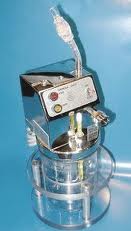
When a machine is given the power to convict a person of a crime, we should be absolutely certain the machine is working properly. In Ohio, machines are used to measure the concentration of alcohol in the breath of drivers. A driver who operates a vehicle with a breath alcohol concentration of .080 or more is guilty of OVI, even if that person’s ability to drive was not impaired by the alcohol. As breath-testing machines have that much power, the accuracy and precision of the machines is critical, so they are subjected to a weekly instrument check. A recent case by an Ohio appellate court downplays the importance of those weekly instrument checks.
The case is State v. Hicks. In that case, Hicks was arrested for OVI and taken to a police station for a breath test. The result of the breath test was over .080, so Hicks was charged with OVI ‘per se’. The defense lawyer filed a motion to suppress the breath test, and the judge held a hearing on that motion.
Breath Testing Machines Must ‘Pass The Test’ Each Week
For a breath test result to be admissible as evidence, the prosecution must prove, among other things, at least two critical facts: (1) the machine was working properly at the time of the defendant’s test; and (2) the machine was maintained in substantial compliance with the regulations in the Ohio Administrative Code (OAC).
Ohio Administrative Code section 3701-53-04 requires law enforcement agencies to conduct a weekly check of the breath testing machine. The check is done using a simulator (like the one in this photo). The simulator generates a vapor which simulates human breath, and that vapor has a known concentration of alcohol (e.g., .100). The machine only ‘passes the test’ if it produces a result within .005 of the known alcohol concentration (e.g., .095 to .105).
This Machine Did Not ‘Pass The Test’
A few days before Hicks’s test, an officer conducted a weekly instrument check, and the machine issued an error code indicating interference was detected. The officer did a second instrument check, and the machine produced a valid result. The day after Hicks’s test, an officer conducted a weekly instrument check, and the machine again issued an error code indicating interference was detected. The machine was then taken out of service, presumably for repairs.
Both the trial judge and the Court of Appeals concluded this scenario does not make the breath test inadmissible. The trial judge found the interference error code means the machine detected a foreign substance, which is part of the machine’s normal operation and does not indicate the machine malfunctioned. The appeals court concluded this finding was based on competent, credible evidence. The Court held the breath test was admissible because the instrument check done prior to the defendant’s test produced a valid result.
The Breath Test Should Have Been Thrown Out
I disagree with the Court’s reasoning and conclusion. The court reasoned the machine was working properly because it detected interference like it is supposed to. My question is this: if it was working properly, why was it taken out of service for repairs? You don’t take a machine out of service if it’s working properly.
Moreover, the Court ignores the rationale for conducting weekly instrument checks. If two checks are done, the checks are seven days apart, and the instrument is working properly during each check, we can (arguably) conclude the machine was working properly in the time between the tests. If the second check is never done and the machine is taken out of service, we do not know when the problem occurred which required the machine to be taken out of service.
With regard to the Ohio regulations, the prosecution failed to prove the law enforcement agency substantially complied with the Ohio Administrative Code. The OAC requires an instrument check to be done every seven days, and the check is only valid if the result is within .005 of the known concentration of alcohol in the simulated breath. In this case, there was not a valid test result within seven days of the previous test.
The presumption of innocence in Ohio OVI cases means the burden is on the prosecution to prove the machine was working properly and was maintained in substantial compliance with the OAC regulations. The prosecution did not meet that burden. This breath test should have been suppressed.
 Columbus OVI/DUI Attorney Blog
Columbus OVI/DUI Attorney Blog

